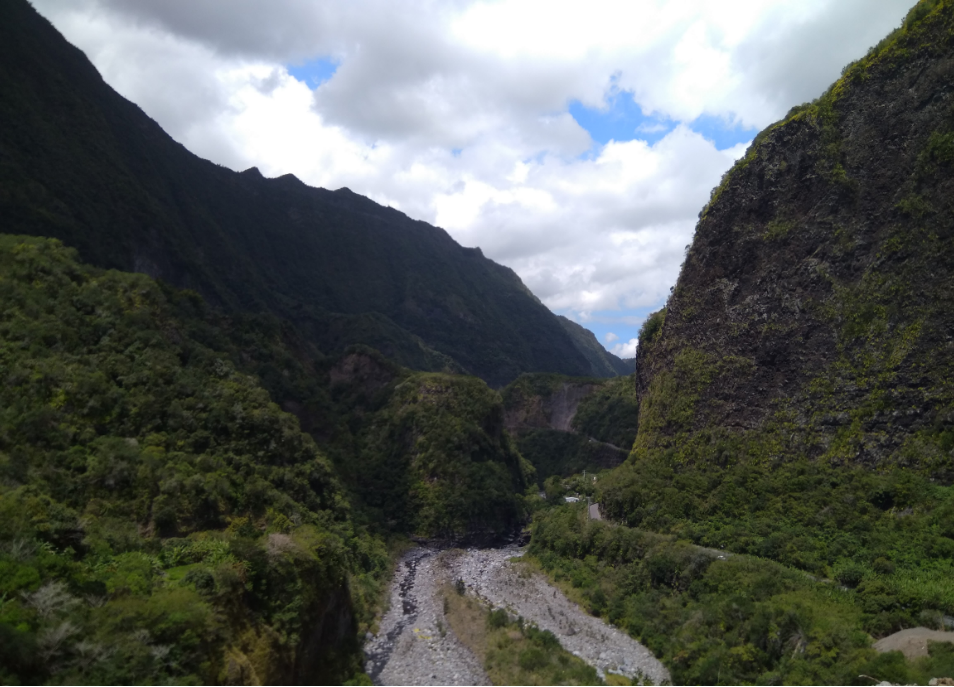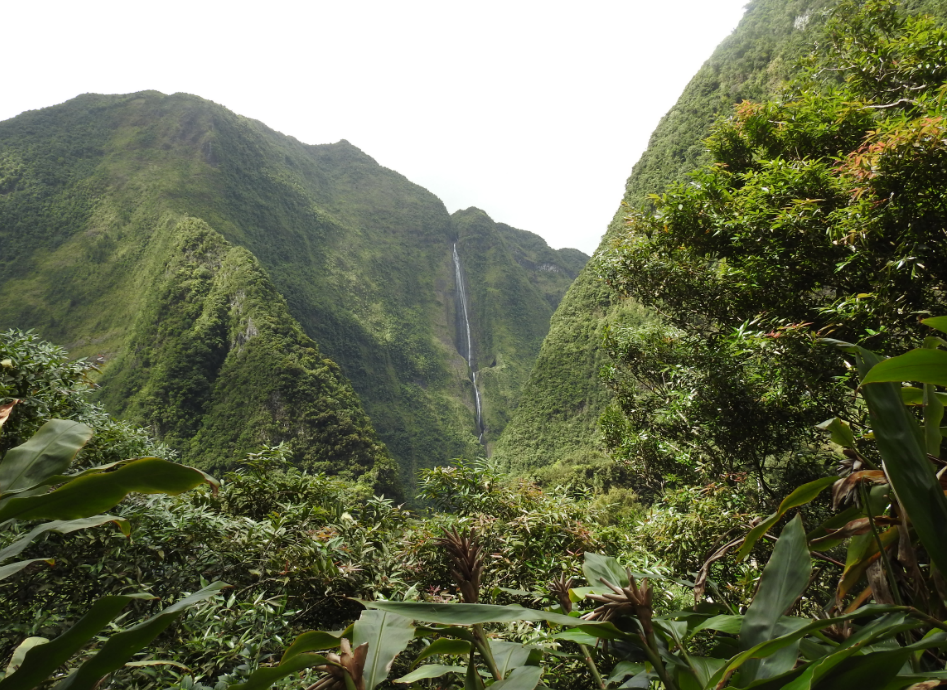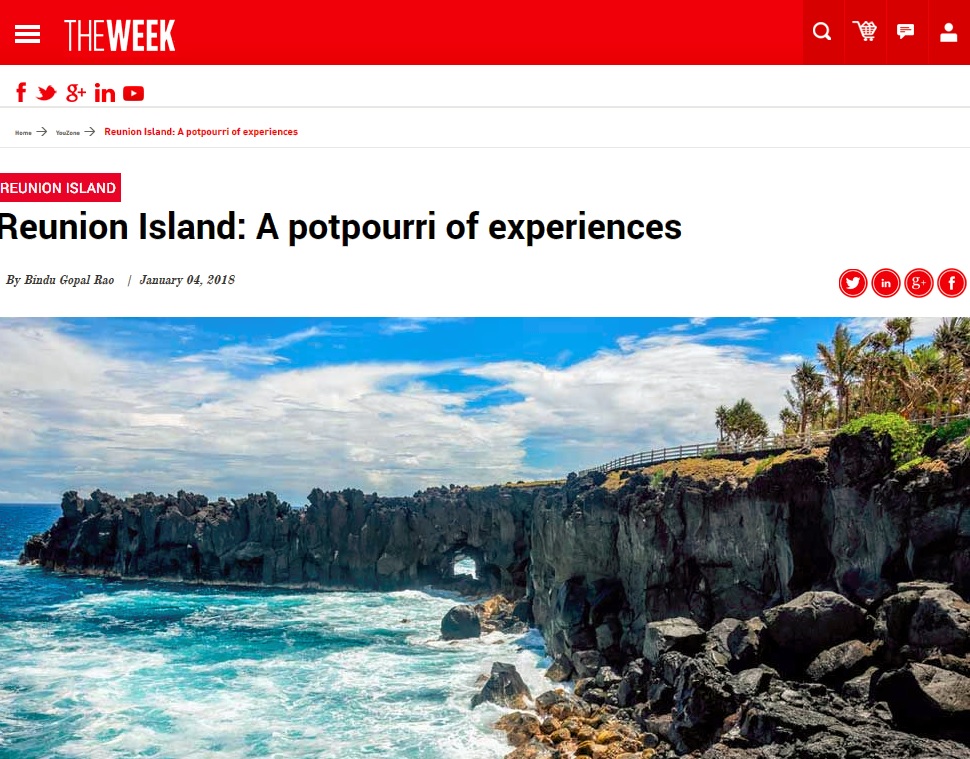
Starting this one with a confession, I must admit that I had never heard of the Reunion Islands before I visited the country. And on looking up the place I was surprised that this country is a French department and is technically part of France in spite of the fact that it is a whopping 9386 km away from Paris! So naturally I was both excited and intrigued to discover this country and when I returned I came back amazed by its amazing bio diversity, its food and most of all the natural vistas it has to offer.
Ode to Nature
If there was one country that has an abundance of nature it is at Reunion islands and it comes as no surprise that about 40 percent of the land is a UNESCO World Heritage Site. At the heart of course is one the world’s safest and most active volcanoes, Piton de la Fournaise, with over 150 recorded eruptions. The pitons, cirques and remparts with their stunning natural beauty with deep ravines, torrents, pools and waterfalls make for a landscape that is jaw droppingly beautiful. The road to the volcano is best visited in the morning before the clouds cover the volcano. The drive is particularly beautiful and you are bound to also spot some beautiful native birds like the Barau’s Petrel, The Flaming Red Fody or Cardinal, Marsh-Harrier, Grey White-Eye, Stonechat, Mascarene Paradise-Flycatcher, Bulbul, Olive White-Eye and White-Tailed Tropicbird among others. There are a couple of vantage view points as well enroute to the mountain that show give you a panoramic view of the entire landscape. If you are upto it, take a trek to the crater, it takes you through some outstanding views but it can get quite damp due to the rains that are quite commonplace here. The trek is not simple so make sure you have shoes with a good grip as the path is strewn with small rocks and pebbles. On the way back stop by at the Cité du Volcan Museum in Bourg-Murat that takes you through the volcano and its journey as well as has several exhibits, audio visual movies and interactive screens that explain everything you want to know about volcanoes. Also halt by at Cap Méchant and see the lava flows that are marked according to the year. It is heartening to see that there are small plants sprouting amidst the brown hardened lava now. I suggest you stop by at the beautiful Church Notre Dame des Laves at Piton Saint Rose where you can see how the lava flowed down the volacano and stopped just around the church.

Multi Micro Climates
At the heart of the island are the three mountainous basins formed when the walls of Piton des Neiges collapsed to form the cirques of Cilaos, Mafate and Salazie. The drive to Cilaos the southernmost cirque will take you in circles quite literally with 400 stomach churning bends through beautiful tree laden hills. The town of Cilaos itself is a treat and is known for its embroidery, spring water and thermal baths, vineyards and lentils. Mafate is the only cirque in the west and is only accessible by foot or by helicopter (which I was lucky to do). A paradise for hikers, this is where you can backpack to see nature in all its pristine glory. Salazie, in the east also has hiking trails, a mountain bike centre and numerous ponds which is a favourite spot among locals. In fact my guide told me that the ‘national sport’ of the island is picnics and you read that right. This place is also known for its traditional architecture that has been preserved to precision. In fact the island has over 200 micro climates that allow you to hike, go horse-riding, mountain biking, golf, potholing, walking or enjoy the beautiful coastal beaches. In fact except for skiing, you can explore the entire range of all kinds of outdoor activities in the island.

Cultural Potpourri
One of the best things in the island is its denizens who are warm, friendly and ever smiling. A perfect example of how different cultures can live together, there are French, African, Indian and Chinese who all speak Creole. The strong Indian connect is hard to miss, as we bumped into several people who traced their Indian roots to their grandparents and great grandparents. I was surprised to see several South Indian style temples here as well that co-exist in perfect harmony with the numerous churches and mosques here. In fact at a stall when I unknowingly picked up a small plant to ask for its price, I was told it was not for sale but the woman gave it to me as a present! And the Creole cuisine is also the same a mélange of influences that creates a unique fusion Interestingly, rice is the main dish that is eaten with lentils, vegetables cooked with tomatoes, turmeric, garlic, onions and thyme, massalés made of goat or poultry in a spicy sauce of coriander, pepper, cumin, cardamom, nutmeg, clove, cinnamon, fenugreek and a chili base. The food is quite similar to what we eat in India except the meat is more varied so you can eat duck, kangaroo and more! Street food and food trucks are all over the place and you will find steam dumplings with pork or chicken called bouchons, samosas (with a variety of fillings), sodas and the local beer called the Dodo beer. Sugarcane juice is also available in most places as this is the main crop of the island. Interestingly a lot of hotels here offer a vegan menu as part of the food so vegetarians and vegans have enough choice as far as food is concerned. The multi layered experiences that I had here filled my heart with a sense of joie de vivre and that really made this place both purposeful and fulfilling. You can read about my other stories here, here and here.
This story appeared in The Week online here:
